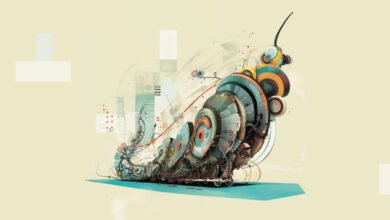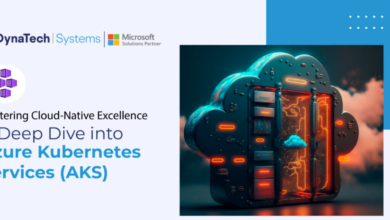How to Create a Smart Building Strategy Based On IoT

Internet of Things (IoT) in Retail: The Future
A huge change taking place in the retail sector of IoT. The digital transformation of brick-and-mortar retail has accelerated due to the growing dominance of IoT technology strategy in e-Commerce and the prominence of disruptive technology.
Customer expectations have changed along with the retail landscape’s evolution. Retailers must be contend with rising competition, soaring real estate costs, developing technologies, and the increasing demand to decrease carbon footprint and support sustainable solutions while meeting consumer experience standards.
For the majority of shops, this circumstance is comparable to waging war on numerous fronts. The hardest part of the fight is deciding where to focus the majority of your efforts and resources in order to maximise your Return on Investment (ROI), sustain your business over the long term, and maintain the high calibre of experiences you provide.
To improve business performance, businesses must elevate building operations to address indoor air quality, occupant comfort, productivity, and operational efficiency. Retailers can achieve these various objectives with the help of IoT technology. Therefore, developing a long-term IoT strategy is essential.
Where Do Retailers Even Begin Their Transformation Journey?
IoT-based energy management has become an obvious solution to operational issues over the past ten years. According to a 2020 Forrester study, 26% of retail businesses in the US were utilising or considering IoT solutions in 2019.
It’s a challenging and intricate environment with a lot of untapped potentials. Therefore, developing a thorough IoT-based smart building strategy for their portfolio of storefronts becomes crucial for retailers. Custom Software Development Company is needed for every business in the business market to enhance their business with the help of technology.
Several of the Major Issues in Implementing IoT
Compatibility difficulties with integration
Communication between various endpoints, such as HVAC, refrigeration, lighting, etc., is facilitated by IoT infrastructure. For each of these endpoints’ systems to be implemented successfully, various tools are needed.
Security
In March 2021, Tripwire and Dimensional Research conducted a poll of cybersecurity specialists from various industrial sectors, including manufacturing, energy, agriculture, pharmaceuticals, and chemicals. The results are noteworthy. According to the poll, 99% of respondents experience difficulties in protecting their connected devices, and 88% lack the resources necessary to address such difficulties at the moment.
There are frameworks and rules to ensure security against such risks in order to protect company interests. Retailers need to make sure their IoT teams are skilled at:
- evaluating the risk
- determining the security procedures for particular integrations
- Design a framework that covers all connected devices
- Proactively monitor the entire IoT lifecycle.
Depository
As IoT systems go live, the amount of data collected grows exponentially. This data should be stored in a format that makes it easy to use and read this data for future analysis and prediction.
In order to efficiently process such huge amounts of data, enterprises need advanced storage processing technology that can operate huge amounts of data faster and accurately.
Intelligent Analytics
Accurate reporting and related analytics on IoT solution performance drive long-term returns on your IoT investments.
Implementing intelligent IoT solutions that can derive precise information from specific data points and generate actionable insights is a complex and nuanced task with experience. Lessons learned from previous implementations lead to better decision-making and higher ROI.
Beecham Research, a technology market research, analysis and consulting firm, conducted a survey of various IoT companies and found that only 12% of the companies surveyed said their IoT implementations were successful. 58% of the handful of companies that have successfully implemented an effective technology agreed that his roadmap is critical to their success.
When retailers apply the lessons learned from these best practices, they are more likely to make a successful transformation. Knowing the full potential of IoT, a retailer should follow this pattern to develop a successful IoT strategy that can withstand the unforeseen challenges of the future.
His IoT Strategy Wins for Retailers
Create a Blueprint
When creating an IoT-based smart building strategy, retailers need a clear vision and a set of end goals they want to achieve through implementation. There is no one-size-fits-all formula for building a long-term strategy.
This design ideally follows answer three simple questions.
- What problem would you like to solve in your IoT implementation?
- What will you achieve if the issue is resolved?
- What is the best possible solution?
The right IoT implementation partner visualises the long-term roadmap for your business. Over the years, the amount of data has grown. Therefore, evaluating the scalability and modularity of potential solutions is also very important.
Evaluate Your Investment
The same Beecham Research report further explores the experience with successful IoT implementations. 76% of companies are rated having adequate financial resources as very important for achieving the highest overall score. Those companies who said their projects had failed, 67% agreed that securing sufficient resources was the biggest improvement needed for their strategy.
In short, the key to a successful IoT strategy is getting the long-term investment needed for a successful implementation. However, this does not mean that organisations that did not assess costs did not have a vision.
Key considerations when evaluating your IoT project investment are:
Hardware Cost:
When adopting IoT technology, certain devices are integrated as part of the solution. The hardware contains sensors. This device collects data on factors such as weight, volume, sound, visibility and temperature.
Hot Tools:
An IoT tool is any device that collects, processes, and exchanges sensor data over the internet. It can control sensor data through commands over the Internet and perform one or more task sets.
Software or Platform Cost:
The IoT platform is the command centre of the solution framework. A centralised software network controls all aspects of communication with connected devices. It contains a customised set of commands for collecting, integrating, and processing data to achieve specific goals.
Building a Prototype / Running a Pilot Project
Adequate technical resources are a key factor in a successful IoT implementation.
Because IoT has many different systems interacting with each other, it makes sense for different departments to work together. Prototyping involves instantiating a network using less robust systems already available and measuring what works and what doesn’t. When implementing a solution or service, pilot it in a percentage of stores (say 10%) to evaluate the process and results. Learning and identifying early issues can help with rollouts across store networks and address issues before such implementations begin.
Phased Implementation Rollout
An IoT project requires not only specialists in different functions to work together but also his IoT team to fit the needs of the identified use cases. This implementation team needs more than just creating a plan for a specific goal.
The goal is to provide flexibility to respond to new and unforeseen challenges effectively. Having a team that can adapt to the situation and deal with unforeseen issues is key to anticipating the “unexpected” and making the IoT deployment a success.
Challenges are the tip of the iceberg. From IoT readiness to interoperability, each feature is tested for performance. A step-by-step implementation allows IoT teams to test systems and implement rule-based machine learning algorithms to collect and analyse data at all levels of communication.
Therefore, retailers should implement change management best practices to guide transformation with the greatest impact and help stakeholders navigate the technology shift.
Conclusion
The IoT as a technology is a very complex behemoth, and its experienced IoT team has their own methods and processes to deal with and control it behemoth and right IoT partner should have deep implementation knowledge and the ability to take an agile deployment approach.
A retailer needs to ensure that an IoT implementation partner can provide a solution across the IoT deployment process. Partners must ensure that enterprise functions and teams exhibit seamless interoperability.
You need to accurately assess risks, fend off threats, devise workarounds to overcome challenges and execute focused strategies to reach your full potential. This guide outlines the biggest benefits and the toughest challenges retailers can face as they embark on developing a successful IoT strategy. The idea is to harness the true potential of technology to implement data-driven solutions that help businesses better serve their customers.



